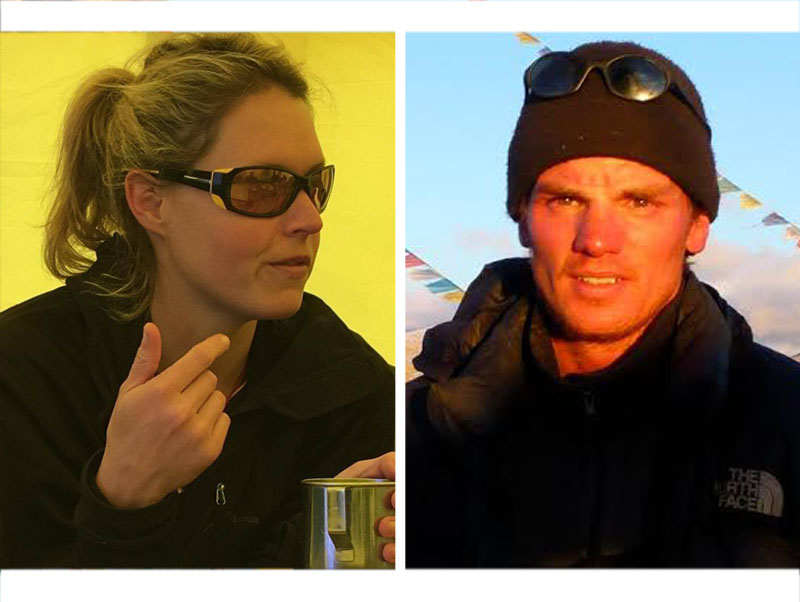Dutch, Australian climbers killed on Mt Everest
Kathmandu, May 21
Two climbers were killed and a few others suffered altitude sicknesses, snow blindness and frostbite near the top of Mt Everest this morning, expedition organisers said.
Eric Arnold from Rotterdam, the Netherlands; and Australian woman climber Dr Maria Strydom died near Camp IV, Pemba Sherpa, manager of Seven Summit Treks, informed. According to him, the climbers were part of an expedition team led by Arnold Coster.
A survivor of last year’s deadly avalanche on Mt Everest, the 36-year-old Dutch climber successfully stood atop the world’s highest peak yesterday while Dr Strydom, 34, died near Camp IV without making it to the roof of the world. She was accompanied by fellow mountaineer Gropel Robert James.
Liaison officer Shiva Bahadur Sapkota, who is now at base camp, also confirmed that Dr Strydom died after suffering from snow-blindness followed by a stroke. Finance lecturer at Monash Business School, Monash University, Dr Strydom had already climbed Denali in Alaska, Aconcagua in Argentina, Ararat in eastern Turkey, and Kilimanjaro in Africa, among other peaks.
Besides altitude-related sickness, Arnold also suffered frostbite on the fingers and eyes, Sherpa added. His latest tweet, however, suggested that Arnold had some issues with oxygen flow and suffered from redness at an altitude of 7,950 metres. Arnold was one among a very few Dutch climbers who succeeded in climbing Mt Everest and It was his fifth attempt to conquer Mt Everest.
Arnold got within 250 metres of the top of the mountain in 2012, when bad weather forced him to turn back.
In 2013, he sustained a severe injury following a skater cut through his Achilles’ tendon. He was forced to abandon his Everest bid due to a huge avalanche that destroyed a part of the ascent route killing 16 mountaineering support staff in 2014, according to his personal website.
Arnold returned to Nepal last year for another expedition. He barely survived after the April 25 earthquake caused gigantic avalanches on Mt Everest. Arnold was also an ambassador for the Holland-based Project MinE that conducts intensive research on Amyotrophic Lateral Sclerosis, a fatal neuromuscular disease.
“We’re trying our best to bring the bodies to Camp II from where a chopper can airlift them to Kathmandu,” Sherpa added.
According to Sapkota, there was a huge crowd of climbers descending from the higher camps as more than 350 mountaineers — both Nepalis and foreigners — had made it to the top of Mt Everest after May 11. A few climbers also suffered from serious altitude-related sicknesses, Sapkota quoted expedition members from the higher camps. “Helicopters have conducted a number of long-line rescues from higher camps to evacuate Everest summiteers throughout the day,” he said.






